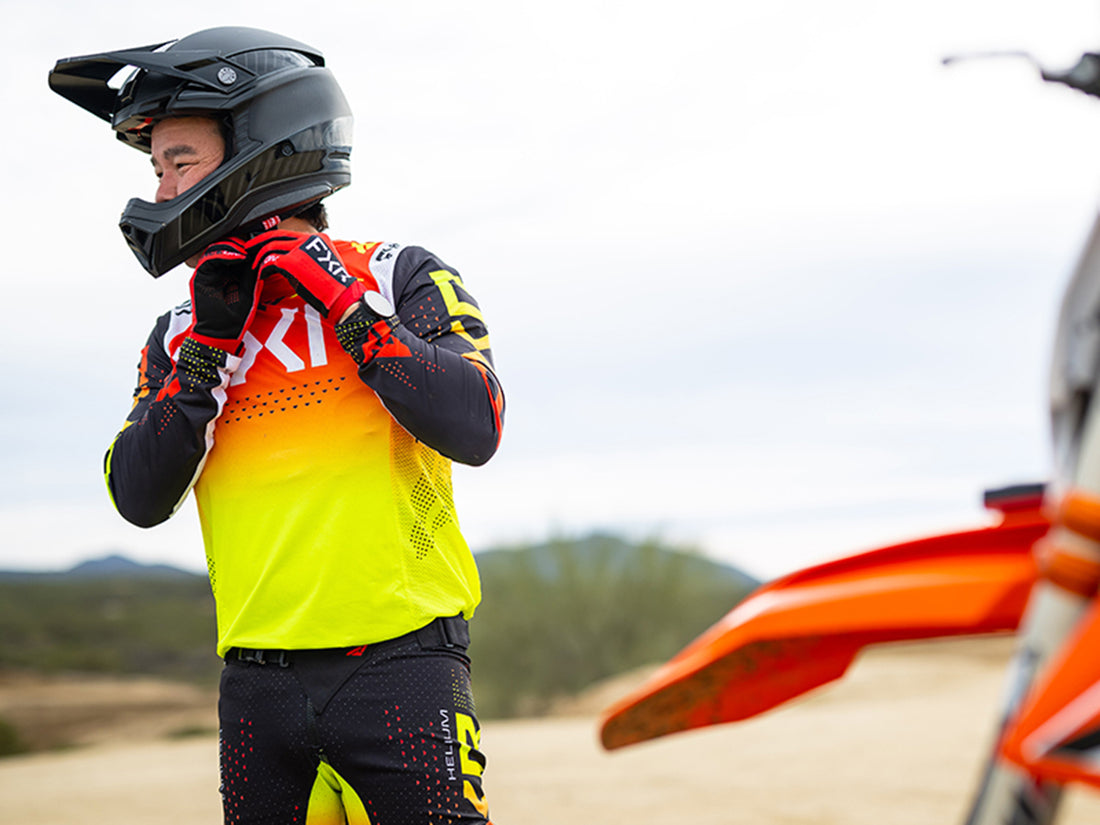Lap time is the most straightforward measure of a rider's overall speed. And it's easy to become obsessed with shaving full seconds, halves, and ultimately, tenths off your time.
So what factors into a lap time? Experience, skill, fitness, technique, equipment, and bike setup play a role. Mastering each variable leads to better consistency in your times. As your consistency increases, the lap times decrease, and actual speed follows.
So you want to go faster and safely but wonder where to focus your efforts with so many variables. Here are a few fundamentals to focus on while you chase that lower lap time.
Ride with intent
How often do you show up at the track, ride, and leave with a feeling that the only thing you accomplished was burning a bunch of gas? There's nothing wrong with spinning laps and having fun if that's the goal. But better habits with more focus are the cornerstone for improving consistency and speed. Arrive at the track with a specific plan for the day. Focus on the areas you've elected to work on the night before.
Tip: Use the note feature to record specifics about your session and goals for the day.
![]()

Eyes up, look ahead
This is crucial, but at the same time, very easy to forget. While riding on the track, getting laser-focused on ruts or other obstacles immediately in front of your wheel is easy. However, focusing your vision and eyes further down the track is essential. The reason for this is twofold. First, look where you want to go, and your body will follow. Second, you can apply smoother inputs to the controls and have time to react if you know what's coming. Knowing what's ahead makes it easy to maintain higher speeds with a calmer mindset.
Minimize the time between obstacles
How quickly can you reach the next obstacle on the track? And contrary to what you're probably thinking, obstacles aren't solely defined as jumps. They could be jumps, rollers, ruts, whoops, braking bumps, acceleration chop, etc.
Riders with less experience will commonly land a jump at a steady speed and only carry that same speed to the next obstacle. Or they coast, which is even less efficient. By doing either of these, they are losing time. To minimize lost time, they should keep the throttle wide open for as long as possible before shutting off. When track conditions aren't ideal, this can be difficult to apply. Start with safer sections and be as aggressive as possible where the track allows you to be.
Tip: Use the braking feature to quickly compare against a faster rider or yourself.
The second screenshot highlights a straight between two jumps with two different riders. The "fur" perpendicular to the route line designates where braking or slowing occurs. The fur height represents how aggressive the braking is and where it begins and ends. In this example (circled), the green rider carries more speed between the jumps and therefore needs to scrub more before tackling the second obstacle.


Improve corner speed
If the conditions are relatively smooth, cutting the shortest line around a corner will be the fast line. However, as conditions become rougher and the track deteriorates, it is beneficial to search for alternate lines. The goal is always to carry as much momentum as possible around a corner. You might try opening the entrance to a corner by entering it further outside and then continuing to use a broader arc to keep the momentum up. Sometimes a foot or two to the right or left is also all it takes to find a smoother line with better traction. Radius equals speed, and minor increases to your average mph equate to significant decreases in your lap time.
Tip: Use the corner analysis feature to quickly compare two different lines in a corner.
Tap the custom segment icon and select the segment you want to zoom in on. The laps from your session will get recut using your custom selection.



The corner analysis feature will automatically provide detailed specifics about your corner entry, apex, and exit.



Better line choice
You can take your chosen line on practice days at the track, but that’s not always the case while racing. So how do you determine what the fast line is? The primary objective of achieving a lower lap time is carrying maximum momentum around the entire track. Focus on keeping the rear wheel on the ground for maximum traction and forward drive. Are you gaining or losing time to the guy in front of you? It doesn’t matter how nasty the line is if you’re gaining on the guy in front of you.
So start thinking about your next track day now. Dedicating practice time to these concepts can be instrumental in lowering your lap time and becoming a safer rider.

